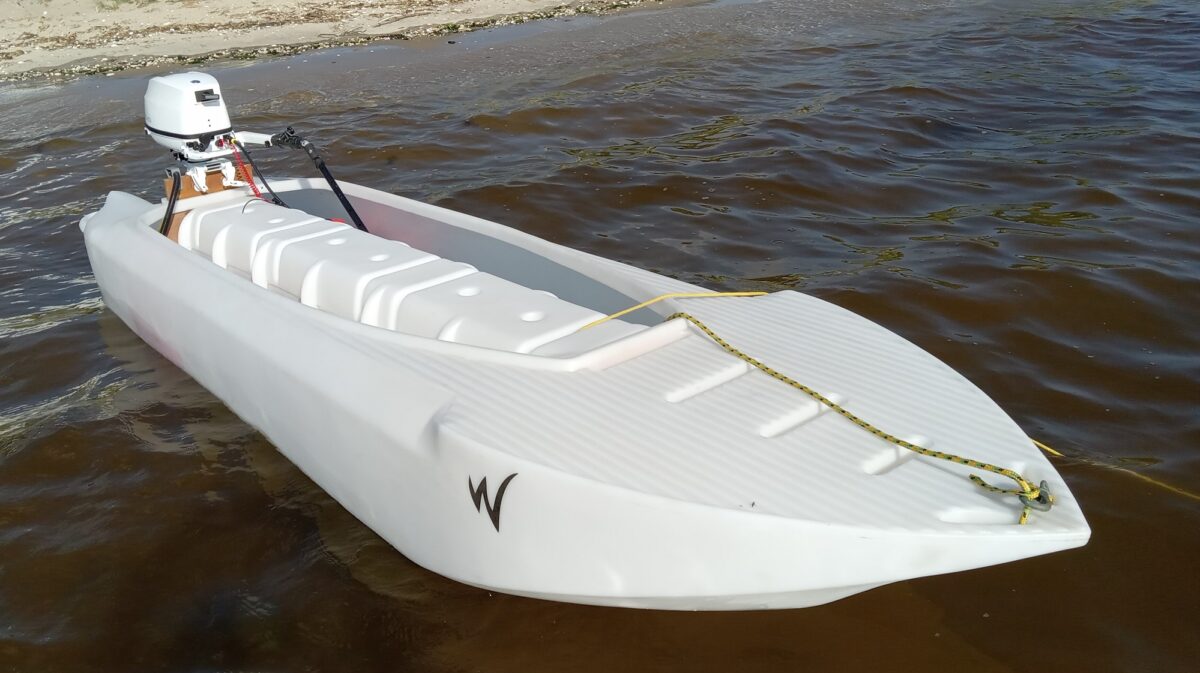Sometimes a technological or design breakthrough pushes the envelope of a product category or class so far that it creates a new type of product that did not exist before. Such thing has happened now with the advent of the new Wavewalk 700 series –
Before the W700 existed, there were several important differences between large size fishing kayaks and small boats.
The most noticeable difference was in width –
Since kayaks’ primary means of propulsion is paddling, they need to be narrow enough to allow their passengers to propel them with dual-blade paddles (‘kayak’ paddles). Boats are not supposed to be paddled but they need to be transported on trailers, which is why their width is determined mainly by the width of roads’ lanes.
The second, and most important difference was in stability –
Being essentially narrow mono-hulls, fishing kayaks are unstable, which is why designers and manufacturers continuously attempt to push the envelope of kayak width by offering excessively wide kayaks (known as ‘barges’) that are quasi impossible and sometimes totally impossible to paddle.
Typically, a monohull fishing kayak’s instability allows an angler occupying its seat to lean slightly to one side, but as soon as they lean more, they lose balance and capsize. By the same token, an extremely large monohull fishing kayak may offer an athletic fishermen to try to stand along the kayak’s center line, but as soon as they move sideways, they lose balance. So basically, the passenger of such large mono-hull kayak is prevented from moving from one side to another, and by this fact such a fishing kayak differs from a boat, which typically offers its passengers to sit or stand on the side of their deck.
When a fishing kayak becomes an ultralight microskiff, or car-top boat
The Wavewalk 700 weighs 80 lbs without accessories, and it’s 31 inches wide, which is fairly slim compared to the average fishing kayak out there, and its very skinny compared to some fishing kayaks whose width exceeds 40 inches. This makes the W700 a lightweight fishing kayak by today’s standards, and a narrow one too, by the same standards.
The W700’s design is based on a patented technology that’s radically different, and this changes the rules of the game as far as stability is concerned.
As this video shows, a full size (6′ / 205 lbs) middle aged passenger can stand up and paddle the W700 in full confidence not just from the traditional position along its center line, but also while standing with both his feet in one of the kayak’s twin hulls:
This puts the W700 in the category of boats, as far as stability is concerned – a true game changer, and together with its extremely good tracking capabilities, turns it into a high performance boat, or microskiff, when motorized.
This movie demonstrates this breakthrough:
Taking a second passenger on board
The ability to take a second passenger on board is a third important difference between fishing kayaks and boats: The former are typically capable of supporting a single passenger, and realistically speaking, no one fishes out of a tandem fishing kayak because neither paddling such craft nor fishing out of them is acceptable in terms of ease or comfort. In other words, these kayaks are not remotely fishable in tandem. In contrast, the typical crew size of a fishing boat, even a small one such as a Jon boat or a microskiff, is two, and this difference is critical.
Here too, the W700 breaks the fishing kayak mold by offering full stability and comfort to a crew of two passengers, not just in a tandem paddling mode, but even when outfitted with a powerful outboard motor, as this video shows –
